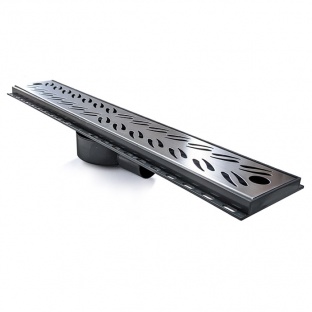| ||||||||||||||
Choosing the Right Drainage Channel for Your Garden20 November 2023 | Admin
When it comes to designing and maintaining a garden, drainage plays a crucial role. Installing drains is an effective way to divert excess water away from your garden beds and lawn. A proper drainage system not only prevents waterlogged areas but also ensures the longevity of your plants and the beauty of your outdoor space. When selecting a drainage channel, there are many factors to consider such as the slope, soil type, and aesthetic of your garden. With several options available, how do you choose the right drainage channel? Here's a quick guide. Assess Your GardenEvery garden is unique, with its soil type, slope, and water flow. Before choosing a drainage system, analyse these factors to determine the level of water flow and where it needs to be redirected. Soil composition affects drainage speed. Sandy soils readily absorb water but drain quickly. Heavy clay soils resist absorption and drain slowly. Inspect the soil to gauge water retention and plan channels accordingly. Wider drainage channels suit slow-draining clay soils. Narrower channels work for freer-draining sandy or loamy soils. The slope or incline of your yard determines how quickly water flows and where it collects. Steeper slopes require wider channels that can handle greater water volume. For relatively flat yards, narrower channels work fine. Measure the slope and mark out areas where water routinely pools. The steeper the grade, the larger the drainage channel needs to be. Select The MaterialThere are primarily two popular choices when it comes to drainage channels - plastic and concrete. Plastic Drainage Channels: Lightweight and easy to install, plastic channels are perfect for homeowners who prefer a DIY approach. They are resistant to most chemicals and don't corrode, making them a durable choice. Plus, they are often more affordable than their concrete counterparts. Concrete Drainage Channels: If you're looking for strength and longevity, concrete channels are the way to go. They can handle heavier flows and are less likely to deform under pressure. However, they can be more challenging to install and might require professional assistance. The size and depth of your drainage channel depend on the amount of water you expect to redirect. For gardens with slight water issues, shallow and narrow channels might suffice. For those dealing with more significant water flows, broader and deeper channels are a better choice. Aesthetic ConsiderationsYour drainage system shouldn't be an eyesore. Many modern drainage channels come with design variations that blend seamlessly with the garden landscape. Choose a design that complements your garden's aesthetics. Drainage channels range from simple gravel trenches to more decorative paved streams and covered gutters. Consider the overall style of your garden when selecting materials. For formal gardens, brick, stone or concrete channels look neat and integrated. In cottage gardens, gravel and grassy swales create a natural look. Or, opt for underground drainage pipes for an invisible option. Location is also key for aesthetics. Place drainage channels strategically around the perimeter or tucked along a rear fence line to minimise visibility. Meandering gravel channels suit a more organic shape. Straight paved channels complement geometric designs. MaintenanceRegular maintenance ensures the effectiveness of your drainage system. Plastic channels might require less upkeep due to their corrosion-resistant nature, while concrete channels might need periodic checks for cracks or breakages. Maintenance checks might include removing debris from channel grates to prevent clogging, re-levelling gravel or rocks if erosion occurs, and checking piping for cracks or leaks. The ease of access and level of maintenance required is something to consider when positioning drainage channels. Buy Garden Drainage Products At Drainage ChannelChoosing the right drainage channel for your garden is a balance between functionality and aesthetics. No matter what you opt for, we have you covered with our fantastic range of products at the Drainage Channel! | ||||||||||||||




















